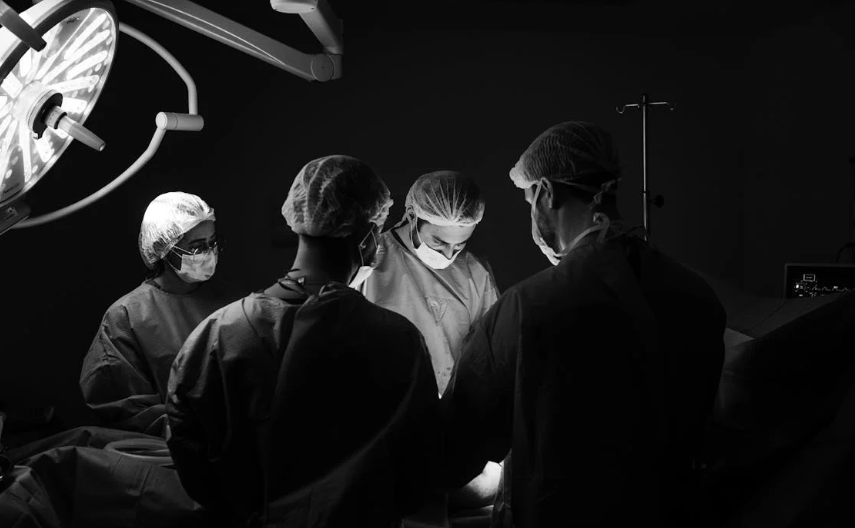Exploring Surgical Options for Spinal Stenosis: Laminectomy, Fusion, and Beyond
Medical and technological advancements have led to different approaches for spinal-related surgery, offering quicker recovery times, fewer side effects, and an overall better quality of life. This article will specifically focus on spinal stenosis surgery, including laminectomies, spinal fusion, and alternative surgeries that include the installation of mechanical devices.
Throughout this article, you will learn the limitations of traditional surgery, the risks involved, the benefits of mechanical spinal implants, and how the spinal stenosis landscape may look in the future.

Table of Contents
Traditional Spinal Stenosis Surgery: Laminectomy and Spinal Fusion
To cure the symptoms of spinal stenosis a doctor may typically recommend a laminectomy (spinal decompression surgery) which is often followed by a spinal fusion procedure.
Laminectomies
Laminectomies are typically performed on the lumbar region of the spine (lower back) and are typically recommended to treat spinal stenosis. A condition that refers to the narrowing of the spinal canal. This operation removes part of the vertebrae (the lamina) to create more space in the spinal canal, thus relieving pressure on the spinal cord and surrounding nerves to relieve a range of symptoms (pain, discomfort, numbness, weakness, etc).
In some cases, a laminectomy may not be recommended to cure symptoms but to prevent any further deterioration in the affected area.
A laminectomy will usually be considered if nonsurgical treatments have failed to improve a person’s condition over some time (typically 8-12 weeks). Nonsurgical treatments may include physical therapy, medication, or steroid injections.
To aid recovery, a doctor will likely advise a patient to partake in regular exercise following a laminectomy to help build muscle strength in the back and improve flexibility. Although laminectomies usually have a high success rate, there is a chance that the symptoms may continue.
Risks/ Complications
Possible complications of a laminectomy include:
- Infections
- Prolonged bleeding
- Blood clots in the legs
- Damage to the dura (a membrane that covers the spinal cord) resulting in spinal fluid leakage
- Nerve damage causing numbness and weakness
- Paraplegia or quadriplegia (rare and extreme cases)
Spinal Fusion Surgery
Spinal fusion can be likened to welding, but instead in the human spine. The procedure fuses two or multiple vertebrae into a single unit, often using a bone graft and metal screws/ rods for extra stability. This can prevent the patient from experiencing pain when they move and helps to support the spine to reduce the chance of further problems.
Spinal fusion is often recommended after a laminectomy. However, this operation could also be performed to treat arthritis, spondylolisthesis, degenerative disc disease, herniated discs, spinal tumors, fractures, and other conditions in the spine. As well as providing stability, spinal fusion can be an effective way to reshape a person’s spine. I.E. for people who suffer from scoliosis (spinal curvature).
As the vertebrae are permanently fused, a person will lose flexibility and motion in their back which may make it difficult to perform simple actions such as bending over. However, if only two vertebrae have been fused, the lack of flexibility will likely be minimal and have little impact on a person’s quality of life.

Risks/ Complications
- Infection
- The wound may not heal properly
- Prolonged bleeding
- Blood clots
- Nerve injury
- Blood vessel damage
- Pain at the site of the fusion
Alternative Surgery: Mechanical Implant Devices For The Spine
As an alternative to spinal fusion surgery, more and more people around the world are opting to have a mechanical implant device installed to replace damaged discs and vertebrae. These devices can provide the answer to a person’s debilitating back pain and other life-altering symptoms while still maintaining full motion in the spine. These devices are often recommended to people who suffer from spinal stenosis and spondylolisthesis.
Sometimes referred to as a posterior arthroplasty system, these devices are effective in maintaining stability and preserving motion in the spine. During a laminectomy, the surgeon will remove some soft tissue and any parts of the vertebrae that are impinging the nerves or spinal cord. The surgeon will then replace these bones with a mechanical implant. Unlike spinal fusion, the patient will not lose any range of motion and will be able to comfortably bend, walk, twist, and enjoy normal activities. This is in addition to eradicating symptoms like back pain, numbness, weakness, or other unwanted sensations.
These systems are most commonly used on a single level between the L2 and L5 sections of the spine. The levels where spinal stenosis is most likely to develop. However, a fixation system can also be installed to allow mechanical implants to be installed across multiple levels without any issues.
Advantages
- Stabilizes the posterior spine to help remove any pain and other side effects.
- Provides more strength and control in the back to avoid further deterioration.
- Maintains a full range of motion so a person can bend, flex, and walk without restriction.
- Offers a faster recovery time when compared to spinal fusion.
Risks
The installation of a mechanical spinal device provides the same level of risk and potential complications as spinal fusion surgery. This could include infections, bleeding, poor healing, blood clots, and other surgical-related issues.

The Future Of Spinal Surgery
Mechanical spinal devices and artificial disc replacements are expected to phase out spinal fusion surgery over the next decade which has too many drawbacks in comparison. These artificial implants are also likely to improve further as scientists experiment with new materials to provide even better solutions that closely match the vertebrae. For example, modern implants have a pliable core that allows vertical compression which allows a person to twist naturally.
Robotics are also becoming commonplace in surgical theaters, reducing invasiveness and blood loss by providing maximum precision. This minimizes the risk of infection and also speeds up recovery time, offering a level of accuracy that even the best human surgeons cannot match.
Meanwhile, as technology such as artificial intelligence continues to grow at a rapid rate, its use in the healthcare industry will become more widespread, helping to diagnose patients and provide optimal solutions and personalized treatment plans.
Thank you for reading. We hope this article has offered valuable insights into the available surgical options for spinal stenosis.






